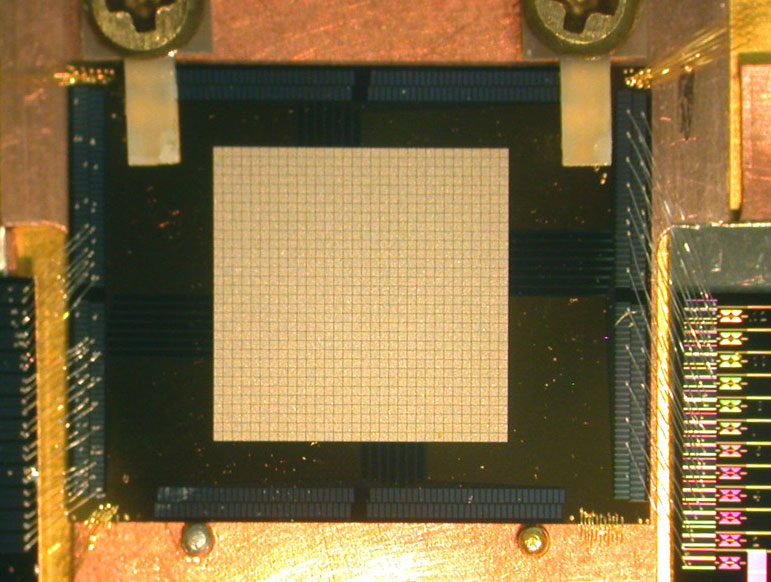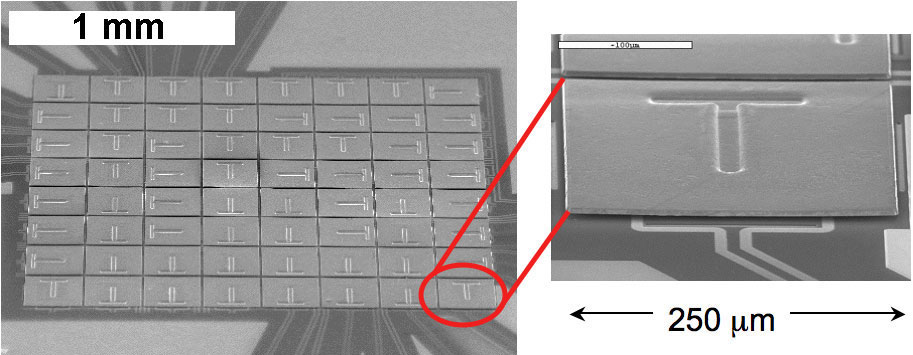X-ray Detectors - Detecting Heat Signatures
X-ray photons have energies that are among the highest for light. When detector material absorbs the energy from an incoming photon, the material heats up just a little. By measuring the temperature change, we can determine the energy of that photon.

Photo of a 32 by 32 microcalorimeter array. (Credit: NASA/Goddard Space Flight Center)
One advance in X-ray astronomy instrumentation that has come in the past couple decades is the development of single photon calorimeters, spearheaded by work at NASA's Goddard Space Flight Center. These devices detect X-rays by the temperature pulses they generate in a small absorber which is cooled to a fraction of a Kelvin.
When an X-ray photon heats a solid, it gives its energy to the whole solid. On average, each atom vibrates a little bit more than before the X-ray hit. Temperature relates the total energy of a system to its state of disorder, or entropy. The "heat capacity" of a material gives a measure of how much the temperature rises for a given energy input.
To measure the temperature increase in an absorber due to an X-ray, it is necessary to have a very sensitive thermometer – something that has a physical property that changes drastically for just a small change in temperature. That detector should also have a small heat capacity, so its temperature would change a lot for a small change in energy. It's also best to have the detector and thermometer work at very low temperatures, because a small temperature change will be much more pronounced in a very cold system.

Magnified image of an array of X-ray calorimeters. (Credit: NASA/Goddard Space Flight Center)
This is how an X-ray calorimeter works. It uses a silicon thermistor which has an electrical resistance which changes dramatically with small changes in temperature. It has a low heat capacity. And it operates at less than 0.1 Kelvin. (For scale, zero on the Kelvin temperature scale is an absolute zero and represents the point at which all thermal vibrations stop. Water freezes at 273 K Nitrogen liquefies at 77 K Helium liquefies at 4 K.)
XRISM will feature an X-ray calorimeter as one of it's X-ray detectors.
How does the XRS instrument measure X-rays? Watch Dr. Caroline Kilbourne describe the instrument in this short clip from "Building the Coolest X-ray Satellite." (Credit: NASA/Suzaku)
Text updated: September 2018


